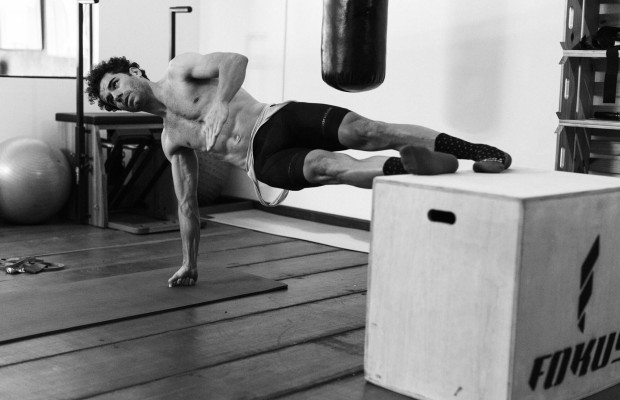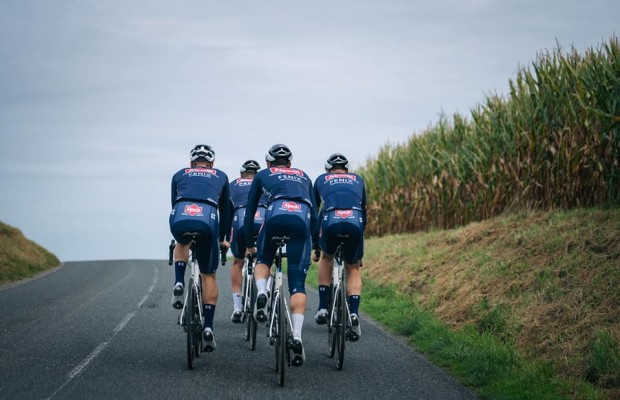The 32" bikes arrive at the World Cup with BMC. Is this the end of the 29"?
At the Andorra World Cup circuit, a bike that could mark the future of mountain biking for the next 20 years has been spotted. A BMC with 32-inch wheels named Project Fahrenheit. This experimental machine developed by BMC's Impec Lab has caused a stir as it was ridden by Titouan Carod during weekend training sessions.

BMC trains at the Andorra circuit with a 32" mountain bike
Unlike other developments that originate in competition teams, this initiative has come directly from BMC's R&D department. According to the Swiss brand, Project Fahrenheit is not a commercially developed model, but a unique prototype whose goal is to gather real data on the performance of an XCO bike with 32" wheels.

To achieve this, BMC's team of engineers radically modified a size M carbon Fourstroke frame. They cut the top tube, bottom bracket, head tube, and dropouts, and then joined everything with aluminum inserts machined in their own CNC, respecting the original geometry of the 29" model as much as possible.

It goes without saying that a 32" wheel represents a radical change for all components, raising the bottom bracket by about 32 mm and requiring a redesign of key elements such as the fork, the rear triangle, and even the cockpit.

RECOMENDADO

Cycling tips for the Christmas season

What would you do if you won the lottery? This cyclist bought himself a €20,000 bike

The best exercise routine to do at home

Benefits of training in the cold

The cyclist's patience: how long, gentle training sessions build your best season

Tips for cycling in the rain
To address the lack of specific forks, BMC has resorted to a modified DT Swiss F 232 One 29" fork with bolted extensions on the dropouts that allow the new wheel to fit without altering the offset. The same applies to the rear end, where special parts were also added to maintain rigidity and tolerance with the larger diameter.

The cockpit is also unique, and BMC had to manufacture a machined stem with a pronounced drop that connects above and below the head tube. The system even includes an integrated steerer stop to prevent the fork crown from hitting the down tube.

Although the tires mounted on the prototype appear without logos, they are Maxxis Aspen 32 x 2.4", developed specifically for this experiment. It has been leaked that the brand already has up to three designs ready for the new size, suggesting that their commitment is serious. There have also been rumors that other brands like Pirelli and Duke could be working on specific components for 32", although secrecy currently prevails.

BMC has revealed that according to the initial tests carried out by engineers and some team riders, the larger diameter wheels offered more grip in rooty sections and greater support at the end of the rear suspension travel.

We are at the beginning of something that we do not know if it will ultimately be accepted, but due to size and geometry, the 32" wheels could be intended only for medium or large-sized cyclists. Even in this prototype (based on a 178 cm rider like Carod), the adjustments have been extreme to achieve a correct position. This could limit their widespread adoption.
BMC has turned an idea into reality, only time will tell if 32" XCO bikes end up reaching the market.
With this presentation, it can be said that the arrival of 32" wheels is not imminent, but it is not absurd either. BMC's Impec Lab has paved the way that many others may already be following.